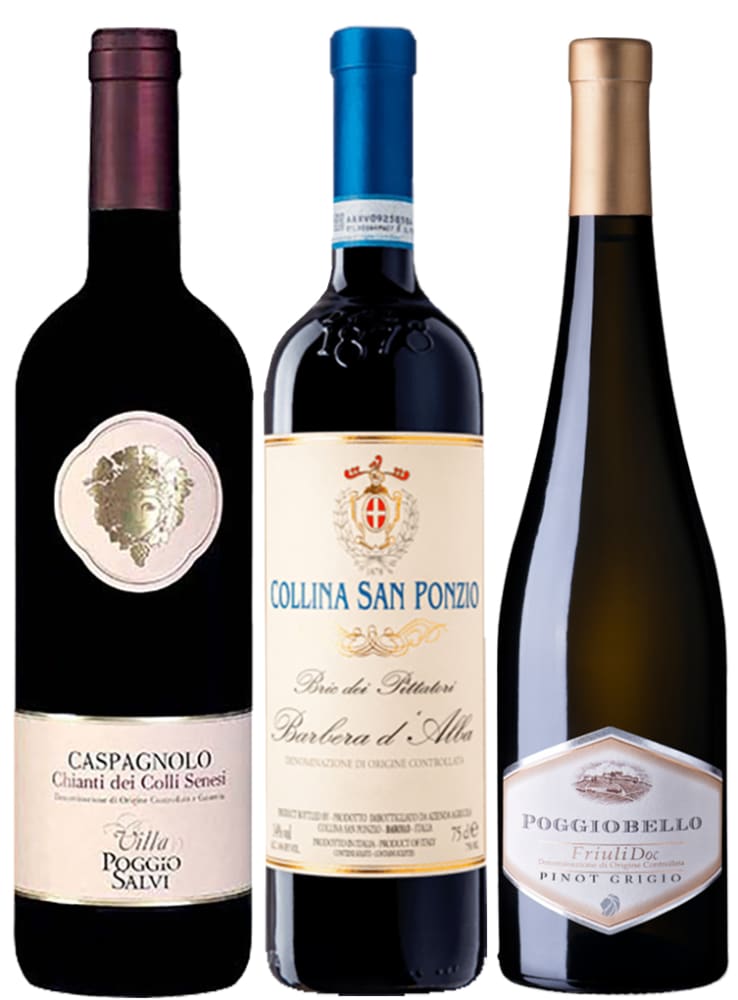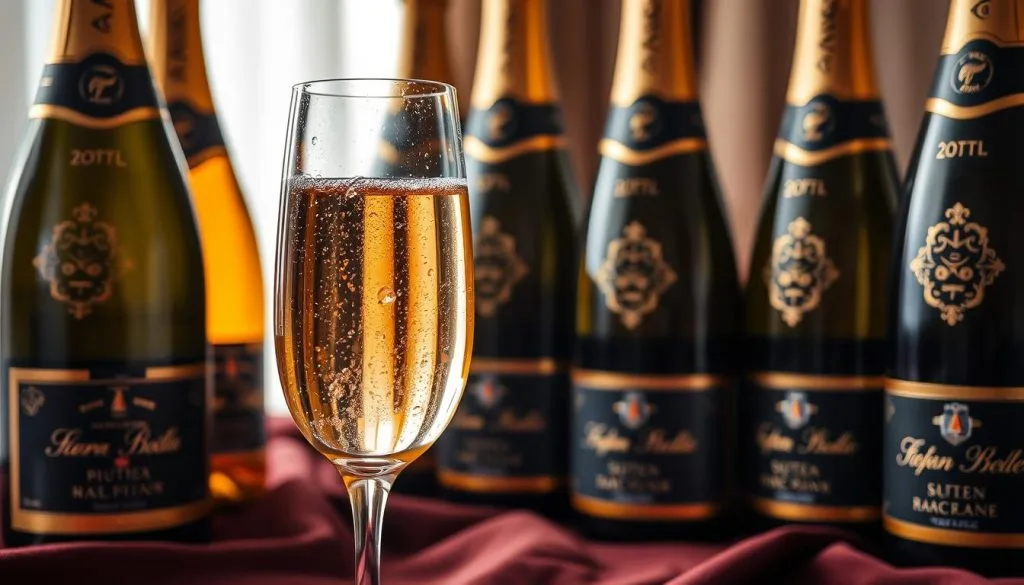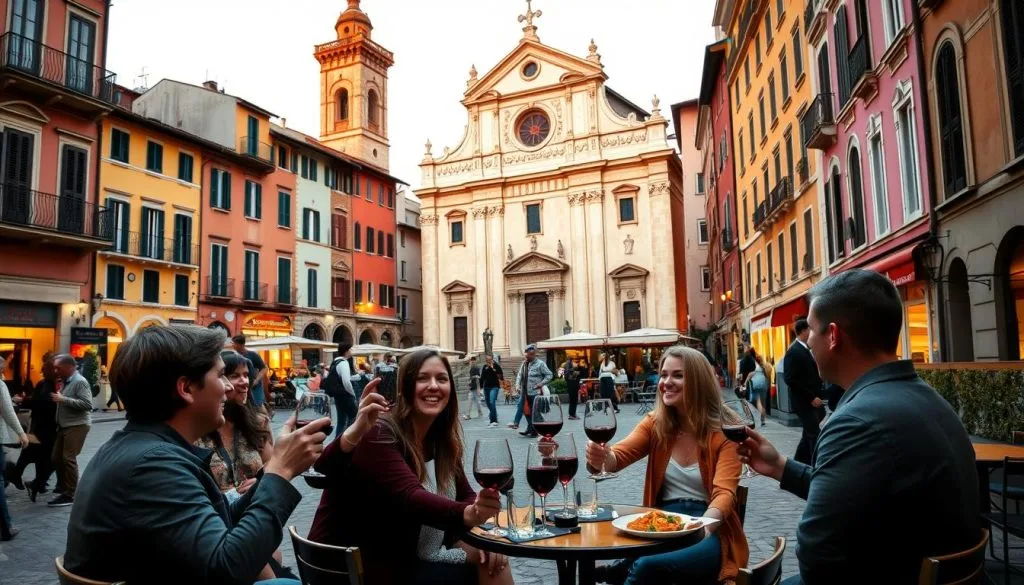This post may contains affiliate links. Read our full disclosure here.
Imagine a culture where every sip tells a story older than the Colosseum. Italy’s relationship with fermented grapes isn’t just about drinks—it’s a 2,000-year-old flex of agricultural genius. Ancient Romans didn’t just conquer lands; they planted vines in prime soil from Campania to Tuscany, crafting legendary pours like Falernian—the VIP champagne of its era.
Today’s italian wine scene blends tradition with TikTok-worthy trends. UNESCO recently crowned historic regions for their “outstanding universal value,” proving what sommeliers knew: these vineyards are the original influencers. From medicinal elixirs in Pliny’s texts to modern natural wine movements, the boot-shaped nation keeps rewriting the rules without losing its roots.

What makes italian wines timeless? It’s the alchemy of volcanic soil, generations of know-how, and a dash of dolce vita attitude. Regions like Piedmont and Sicily aren’t just making bottles—they’re bottling liquid heritage that pairs equally well with Michelin stars or pizza Fridays.
This isn’t your nonna’s Chianti lecture. We’re diving into how ancient Setine vintages inspired modern orange wines, why Florentine merchants were the original hypebeasts, and how today’s producers balance Instagram aesthetics with methods older than Latin itself. Pass the Barolo—history never tasted this fresh.
An Introduction to Italy’s Wine Heritage
Picture a country where vineyards double as time capsules, bottling rebellion and romance in equal measure. Italian wine isn’t just a drink—it’s a liquid diary scribbled across millennia. Greeks called the peninsula “Oenotria” (land of vines) in the 8th century BC, but today’s producers still crush grapes using wisdom older than Dante’s rhymes.
Cultural DNA in Every Glass
Romans didn’t just drink wine—they weaponized it. Legionnaires carried vines like ammo, planting them from Sicily to the Alps. Fast-forward to modern wines: that same territorial pride fuels DOCG certifications, where rules are stricter than a Milanese nonna’s pasta recipe. Over 54 liters consumed annually per person? That’s not indulgence—it’s identity.
Tradition Meets TikTok
Generational know-how collides with Gen-Z trends. Tuscan families still stomp grapes barefoot while Instagram influencers hashtag #NaturalWineRevolution. Ancient amphorae aging methods now share cellar space with carbon-neutral tech. As one Piedmont vintner quipped: “Our winemaking playlist runs from Gregorian chants to Dua Lipa.”
Prosecco’s global fizz fame? Just the latest plot twist. From sacred temple offerings to supermarket shelves, Italy’s vineyards prove heritage isn’t about preserving dust—it’s about sparking new flames. Pass the Sangiovese; history’s never been this thirsty.
The History of Wine in Italy
Long before hashtags, Italy was curating the original viral sensation—bottled terroir. Etruscan clay jars and Roman oak barrels became ancient TikTok, spreading fermentation hacks across the Mediterranean. When Julius Caesar sipped Falernian, he wasn’t just drinking—he was taste-testing what would become the blueprint for global viticulture.
The real plot twist? Monks. Benedictine brothers kept vineyards alive through the Dark Ages like sommelier superheroes. Their cellars birthed prototypes for today’s DOCG rules—quality controls stricter than a Milan Fashion Week guest list.
Fast-forward to 1963: Italy dropped the DOC system like a mic. Suddenly, Chianti Classico had more regulations than a Ferrari engine. This wasn’t bureaucracy—it was a declaration of liquid independence. By 1980, Brunello di Montalcino’s DOCG status made it the Beyoncé of red wines.
Modern vintners walk a tightrope between tradition and tech. Those same volcanic soils that nourished Roman vines now feed biodynamic vineyards. As one Sicilian winemaker grinned: “Our history isn’t in museums—it’s in every cork pop that says ‘Made in Italy’ to the world.”
From phylloxera survival stories to Instagrammable orange wines, Italy’s oenological résumé keeps rewriting itself. The secret? Treating every harvest like it’s auditioning for the world stage—no autotune needed.
Ancient Beginnings of Italian Viticulture
Centuries before Instagram influencers, Mycenaean Greeks were the original trendsetters of Italian viticulture. These settlers didn’t just bring olive oil and philosophy—they rebranded the peninsula as “Oenotria,” a land of trained vines. Archaeological digs in Sicily’s Monte Kronio reveal grape seeds dating to 4000 BC, proving this country’s wine roots run deeper than Roman ruins.
Greek Influences and Early Techniques
The Mycenaean playbook? Foot-stomping fermentation and terra cotta storage—techniques later adopted by Etruscans. Forget stainless steel tanks; these amphorae became the ancient system for aging wines. Modern producers like Antonio Arrighi still mimic these methods, crafting marine-aged pours that taste like liquid archaeology.
Vineyard Origins in Antiquity
Southern Italy’s volcanic soil became the testing ground for Europe’s first proper vineyards. Greek colonists established production hubs that functioned like Bronze Age Napa Valleys. Their legacy? A blueprint for regional specialization that still dictates which country areas grow Nero d’Avola versus Sangiovese.
| Ancient Technique | Modern Equivalent | Impact |
|---|---|---|
| Foot-stomping | Mechanical crushers | Preserves delicate tannins |
| Terra cotta jars | Concrete eggs | Enhances mineral complexity |
| Sunken amphorae | Marine-aged wines | Revives historical flavors |
Mastroberardino Winery’s Pompeii project—replanting vines from volcanic ash—shows how today’s production systems still mine ancient wisdom. As one enologist notes: “Our country doesn’t make wine—it decants time itself.”
Roman Innovations in Winemaking
Rome didn’t just build roads—they engineered liquid empires. While gladiators battled in arenas, vineyard architects reshaped Italy’s landscape with military precision. Their secret weapon? A three-part strategy: expand territory, optimize techniques, and codify grape hierarchies like ancient sommeliers.
Vineyard Domination Tactics
Legionnaires carried vine cuttings like swords, planting vineyards from Sicily to the Alps. They engineered trellis systems that turned slopes into liquid goldmines—think of it as the Roman version of vertical farming. Pliny the Elder’s grape classification system (#SweetVsSavory) became the TikTok trend of antiquity.
Barrels, Presses & Liquid Algorithms
Forget amphorae—Rome’s real game-changer was oak barrels. These mobile aging chambers let wines develop complexity while traveling empire-wide trade routes. Their screw press technology extracted juice so efficiently, it’d make modern winemakers blush. Some estates today still use replicas for premium vintages.
| Roman Technique | Modern Equivalent | Impact |
|---|---|---|
| Trellis systems | Vertical shoot positioning | Maximizes sun exposure |
| Wooden barrel aging | French oak barriques | Adds vanilla/spice notes |
| Grape classification | DOCG regulations | Ensures regional authenticity |
What’s the throughline from then to today? Modern vineyards still battle phylloxera with Roman-level grit. As one Campanian producer notes: “We’re not making wine—we’re coding updates to a 2,000-year-old app.” The real legacy? Proving that discipline + creativity = timeless taste.
Evolving Traditions During the Middle Ages
Move over, TikTok winemakers—medieval monks were the original content creators of viticulture. While wars and plagues rocked Europe, Benedictine and Cistercian brothers became guardians of grape knowledge, preserving techniques like living USB drives in stone-walled monasteries. Their cellars? The first regulations playbook for quality control.
The Role of Monastic Winemakers
These holy vintners didn’t just pray—they pruned, pressed, and perfected fermentation like oenological ninjas. Secluded abbeys became innovation hubs where spirituality and craft merged. “Winemaking was part liturgy,” explains historian Giulia Rossi. “Each harvest felt like rewriting scripture in juice form.”
Monks documented everything—soil types, pruning methods, aging tricks—in manuscripts stricter than modern appellations. Their work laid the groundwork for DOCG rules centuries later. When they planted vines near Burgundy’s Cluny Abbey, they weren’t just farming—they were curating a time capsule for future sommeliers.
| Medieval Method | Modern Equivalent | Legacy |
|---|---|---|
| Handwritten manuscripts | DOCG rulebooks | Standardized quality |
| Sunken fermentation cellars | Temperature-controlled facilities | Precision aging |
| Communal harvest rituals | Estate-grown certifications | Terroir authenticity |
As one 12th-century Benedictine scribbled in his diary: “To make wine is to participate in God’s work.” This sacred-meets-scientific approach kept Italian viticulture alive through plagues and invasions. Their greatest flex? Turning monasteries into time machines where ancient Roman techniques evolved into Renaissance-ready practices.
Renaissance and the Revival of Italian Wine

While Michelangelo chiseled David, Tuscan vintners were sculpting liquid masterpieces. The 15th-century cultural reboot didn’t just birth frescoes—it revived the sun-drenched land’s oldest alchemy. Humanist scholars dug up Roman winemaking scrolls like VinTikTok hacks, translating Pliny’s fermentation notes into actionable content.
Florentine merchants became OG influencers, trading amphorae of Chianti for Flemish art. Suddenly, quality mattered more than quantity—Medici banquets paired Botticelli with Brunellos aged in chestnut barrels. As one Sienese winemaker joked: “We didn’t need NFTs; our terroir was the original blockchain.”
The real game-changer? Rediscovering marine-aged wines through salvaged Greek manuscripts. Producers like Fattoria Fibbiano revived centuries-old techniques, submerging Sangiovese grapes in Tyrrhenian waters—a method last used when Caesar rocked a toga. This wasn’t nostalgia; it was a vibe check blending tradition with experimental swagger.
Modern DOCG standards owe their DNA to this era’s obsession with perfection. That crisp Vermentino you sip? It’s running on a centuries-old algorithm refined by Renaissance geeks who valued soil pH as much as sonnets. As one enologist notes: “Our history of viticulture isn’t archived—it’s poured nightly at trattorias worldwide.”
From Leonardo’s vineyard sketches to Instagrammable orange wines, the Renaissance proved innovation thrives when you respect the land’s liquid legacy. Italian wine’s modern benchmarks? Just the latest brushstroke in a masterpiece that’s been evolving since Masaccio nailed perspective.
Adversity and Triumph in the Wine Industry
Italian vineyards faced their zombie apocalypse in the 1800s—a tiny aphid called phylloxera. This root-chomping pestilence wiped out 75% of vines, turning storied grape varieties into ghost towns. Yet like Romans rebuilding after barbarian invasions, winemakers fought back with American rootstock grafts and sheer grit.
The Impact of Phylloxera and Recovery
When 1960s bureaucrats dropped DOC regulations, it wasn’t paperwork—it was a quality revolution. Think of it as the Roman Empire’s road-building discipline applied to vineyards: strict yield limits, approved grapes, and geographic precision. Regions like Abruzzo rose from the ashes, their Montepulciano d’Abruzzo DOC becoming a badge of honor.
Enter the Super Tuscans—rebel vintners mixing Cabernet with Sangiovese like liquid alchemists. These rule-breakers (Sassicaia, Tignanello) became cult favorites, proving Italy’s genius for turning crises into creativity. As one Chianti producer smirked: “Phylloxera made us scrappy. Now we out-innovate Bordeaux.”
| Crisis | Ancient Response | Modern Solution |
|---|---|---|
| Phylloxera (19th c.) | Roman grafting techniques | American rootstock hybrids |
| Market collapse | Imperial trade networks | DOC/DOCG certifications |
| Quality erosion | Pliny’s vineyard manuals | Super Tuscan innovations |
Today’s comeback story? A 400% export surge since 2000. From near-extinction to global domination, Italy’s vino villains became heroes—one resilient sip at a time.
Modern Italian Wine Classification and Regulations
Italy’s wine labels carry more clout than a Milan Fashion Week front row pass. Born in 1963, the classification system operates like a luxury brand’s authentication protocol—DOC, DOCG, and IGT tiers separate timeless classics from experimental limited editions. This isn’t bureaucracy; it’s liquid couture where every bottle tells a story of italian culture and territorial swagger.
Understanding DOC, DOCG, and IGT Systems
DOCG (Denominazione di Origine Controllata e Garantita) wines undergo stricter checks than a Prada quality control team. Think Brunello di Montalcino—each batch tested, bottled with numbered government seals. DOC tier wines like Chianti Classico follow precise regional recipes, while IGT (Indicazione Geografica Tipica) acts as the italy wine industry’s innovation lab. Here, rule-breakers like Super Tuscan Sassicaia blend Cabernet with Sangiovese, defying tradition yet dominating global charts.
The system mirrors italian culture—rooted in history but allergic to stagnation. When 1992 EU regulations demanded updates, Italy responded like a sommelier-turned-DJ: keeping DOCG’s classic beats while letting IGT remix grape varieties. This duality fuels trust—73% of US importers cite certifications as key purchasing factors—while letting vintners play maverick.
From volcanic Etna DOCGs to Tuscany’s boundary-pushing IGTs, these labels aren’t just stamps. They’re liquid passports proving italy wine’s power to honor its history while rewriting global playbooks. As one Piedmont producer smirked: “Our rulebook? Older than your Instagram filters—and twice as effective.”
Quality Over Quantity: Resurgence of Premium Wines

Italy’s vineyards traded bulk bins for bottle service. Gone are the days of jug wines—today’s producers craft liquid couture with Glera grapes and Nerello Mascalese. US imports of sparkling wines surged 10% last year, proving bubbles beat bulk in modern markets.
Southern Italy leads this revolution. Once known for plonk, regions like Campania now deliver Aglianico-powered masterpieces. “We’re not farmers—we’re flavor architects,” says a Sicilian vintner blending indigenous grapes with space-age tech. DOCG certifications jumped 23% since 2010, turning appellations into luxury badges.
Prosecco’s global fizz dominance shows how tradition fuels innovation. Ancestral method meets Instagrammable packaging—each cork pop designed for virality. Millennials drive 44% of premium purchases, swapping quantity for stories in every sip.
Regulatory muscle backs this shift. DOC rules now demand stricter grape selection than a Milan Fashion Week casting call. From volcanic Etna reds to southern Italy’s Fiano whites, small-batch beats scale in today’s vino economy.
The proof? Sparkling wines now outsell French champagne stateside. As one Veneto producer quips: “Our grapes don’t grow—they curate experiences.” Italy’s vino volcanico moment isn’t coming—it’s erupting.
The Role of Italian Winemakers and Vineyards Today
Italian vintners today are coding liquid algorithms—blending ancestral soil wisdom with 21st-century swagger. Forget dusty cellars; think solar-powered fermentation tanks and AI-driven harvest predictions. This is winemaking 3.0, where tradition gets a firmware update.
Emergence of Super Tuscans
The 1970s saw Tuscany’s rebel alliance—Sassicaia, Tignanello—flipping the script on DOC rules. These Super Tuscans mixed Sangiovese with Cabernet like fashion collabs, proving regional identity thrives on rule-breaking. Antinori’s 2022 Tignanello release crashed wine apps faster than Beyoncé tickets.
Local Craftsmanship and Innovation
From Angelo Gaja’s drone-monitored Nebbiolo to Elisabetta Foradori’s biodynamic Nosiola, modern makers are vineyard hackers. Piedmont’s varieties like Barbera now age in amphorae buried in Alpine snow—ancient meets Arctic cool.
| Tradition | Innovation | Impact |
|---|---|---|
| Sangiovese grapes | Satellite soil analysis | Optimal ripeness tracking |
| Hand-harvesting | AI yield predictors | 20% waste reduction |
| Wooden barrels | Neutral concrete eggs | Purer terroir expression |
Sicily’s Mount Etna region exemplifies this duality—volcanic slopes host both 150-year-old bush vines and carbon-neutral bottling plants. As Marc de Grazia’s team notes: “Our varieties aren’t just grapes—they’re time travelers bridging eras.”
With 20 distinct regions crafting signature varieties, Italy’s vino landscape remains as diverse as a Milan street style feed. From Veneto’s Prosecco hills to Apulia’s sun-baked Primitivo, local innovation ensures every cork pop delivers heritage with a side of hustle.
Influence of Italian Wine on Global Markets
Global wine aisles bow to Italian might—€8 billion in 2023 exports prove the boot-shaped nation still sets the industry gold standard. While France leads production volume, Italy’s DOCG classification system became the blueprint for premium vino worldwide. Think of it as the Louis Vuitton authentication code for fermented grape juice.
America’s thirst fuels this dominance. US imports grew 15% last year, with Prosecco outselling French champagne. New York sommeliers now stock Etna Rosso like limited-edition sneakers. “Italian labels aren’t just drinks—they’re cultural flexes,” notes a Napa Valley buyer. “You’re buying 2,000 years of swagger in a bottle.”
| Year | Export Volume (hectoliters) | Key Markets |
|---|---|---|
| 1872 | 5,790 | Germany, UK |
| 1914 | 100,000+ | USA, France |
| 2023 | 38 million | USA, China |
Beyond economics, Italy rewrote the industry playbook. Their blockchain traceability systems now guide EU regulations, while natural grape farming practices shape global sustainability standards. When Campanian vintners revived ancient Greco-Roman techniques, Instagram sommeliers trended #WineTimeMachine.
This duality—mass appeal meets artisanal craft—defines modern dominance. Super Tuscans command auction prices while classification rebels like Orange Wine gain TikTok fame. As one importer quips: “Italy doesn’t follow trends—it archives them in DOCG vaults.”
Exploring Italy’s Diverse Wine Regions
Italy’s wine map unfolds like a couture collection—each region tailored to perfection. From Nebbiolo’s velvet grip in Piedmont to Primitivo’s sun-kissed swagger in Apulia, viticulture here crafts liquid identities sharper than a Versace runway. This isn’t uniformity; it’s 20 distinct terroir signatures shaped by volcanic soil, Alpine breezes, and millennia of rebellion.
Northern Italy: From Piedmont to Veneto
Piedmont’s fog-kissed slopes birth Barolo—the “King of Wines”—aged three years to unlock truffle and tar notes. Veneto counters with Prosecco’s effervescent charm and Amarone’s raisin-rich intensity. Cool climates here demand precision: think of it as viticulture’s answer to Swiss watchmaking.
Southern Italy: Sicily, Apulia, and Beyond
Down south, Sicily’s Nero d’Avola grapes soak up Mediterranean rays, yielding wines bolder than a Dolce & Gabbana print. Apulia’s Primitivo vines thrive in limestone-rich soil, their jammy flavors aged in experience-carved cellars. Heat and history collide here—winemakers blend Phoenician techniques with carbon-neutral tech.
| Aspect | Northern Viticulture | Southern Viticulture |
|---|---|---|
| Climate | Cool, alpine-influenced | Hot, Mediterranean |
| Signature Grapes | Nebbiolo, Corvina | Nero d’Avola, Primitivo |
| Style | Structured, age-worthy | Bold, fruit-forward |
| Innovation | Robotic harvesters | Solar-powered fermentation |
Landmark regions like Mount Etna prove viticulture isn’t static—its wines erupt with mineral intensity from 2,000-year-old lava beds. Whether sipping Veneto’s sparkling stars or Sicily’s volcanic reds, Italy’s liquid geography offers a passport-free experience—one glass at a time.
Distinct Grape Varieties and Their Significance
Italy’s vineyards are genetic archives—each grape a centuries-old code waiting to be uncorked. From volcanic slopes to alpine valleys, indigenous varieties carry cultural fingerprints older than Renaissance frescoes. These aren’t just plants—they’re liquid libraries preserving regional dialects of flavor.
Red Varietals and Their Heritage
Sangiovese wears its Tuscan roots like a tailored suit—structured tannins, cherry vibrancy, and leathery whispers. Nebbiolo? The tradition-keeper of Piedmont, crafting Barolo’s rose-and-tar poetry that ages like a Puccini aria. Both grapes thrive where culture meets geology, their DNA shaped by chalky soils and generations of selective breeding.
White Varietals and Regional Expression
Vermentino dances coastal Sardinia with salt-kissed citrus, while Fiano resurrects Roman-era recipes in Campania’s volcanic embrace. Glera grapes spark Prosecco’s global fizz empire, proving tradition can wear a party dress. Each sip maps microclimates—Alto Adige’s crisp Pinot Grigio versus Sicily’s sun-drunk Carricante.
| Grape | Region | Flavor Signature |
|---|---|---|
| Sangiovese | Tuscany | Tart cherry, dried herbs, clay minerality |
| Nebbiolo | Piedmont | Rose petal, truffle, forest floor |
| Vermentino | Sardinia | Sea spray, lime zest, almond skin |
| Fiano | Campania | Honeycomb, stone fruit, smoky finish |
These varieties aren’t accidents—they’re centuries of adaptation. Volcanic Etna refines Nerello Mascalese’s spice, while Alpine breezes hone Cortese’s razor-sharp acidity. As one Friulian winemaker says: “Our grapes don’t grow—they curate.”
Production Processes: From Harvest to Bottling
Italian winemaking struts between time-tested rituals and lab-coat precision. Each bottle captures a ballet of soil, science, and generations of muscle memory—transforming fruit into liquid gold.
Harvest Alchemy
Dawn patrols kick off the grape gauntlet. Families hand-pick clusters when acidity and sugar hit their sweet spot—some regions start at 7 AM sharp. These vintage-defining decisions require more intuition than a Michelin chef balancing flavors.
Fermentation Frontiers
Crusher-destemmers mimic ancient foot-stomping but add laser precision. Yeast strains like Saccharomyces cerevisiae work overtime, converting sugars into boozy magic. Reds ferment with skins for tannin grip; whites press first for crisp purity.
| Process | Traditional | Modern |
|---|---|---|
| Aging | Oak barrels (3+ years) | Concrete eggs |
| Bottling | Cork closures | Nitrogen-flushed lines |
| Quality Control | Taste tests | Spectrometer analysis |
Barolo producers still age Nebbiolo in Slavonian oak—a nod to homegrown traditions. Yet tech sneaks in: drones monitor barrel temps, while blockchain tracks each bottle’s journey from vine to shelf.
This fusion secures Italy’s status as a destination where every sip carries ancestral whispers and Silicon Valley smarts. From volcanic slopes to Alpine cellars, production isn’t just process—it’s performance art with a 2,000-show run.
Italian Wine in Cultural and Historical Context
Bacchanalia meets brunch culture—fermented grapes have always been Italy’s social lubricant. From Roman market stalls to TikTok aperitivo trends, vino flows through daily rituals like a 2,000-year hashtag. Ancient taverns buzzed with political gossip over clay cups; today’s enotecas host influencer collabs featuring skin-contact Vermentino.

Wine as a Reflection of Italian Lifestyle
Regional areas craft liquid identities sharper than Milanese tailoring. Sicilian farmers toast harvests with Nero d’Avola, while Venetian aristocrats sip Prosecco aboard yachts. Each pour whispers local dialect—volcanic Etna reds taste like geological rebellion, Tuscan Sangiovese smolders with Medici-era swagger.
Market forces shape taste across eras. Pompeii’s eruption spiked prices to €3M per amphora (2024 equivalent), creating ancient FOMO. Modern DOCG labels act as cultural passports—42% of global buyers choose bottles for their terroir stories over grape blends.
| Era | Social Role | Modern Parallel |
|---|---|---|
| Roman Bacchanalia | Religious ecstasy | Festival culture |
| Medieval Feasts | Class signifier | Michelin pairings |
| 1970s Dolce Vita | Cinematic glamour | Instagram aesthetics |
What endures? The alchemy of taste and tradition. Nonnas still pour house red at Sunday lunch, while Gen-Z somms chase orange wines in trending areas. As one Florentine bartender grins: “Our market isn’t shelves—it’s souls.”
Conclusion
Italy’s vineyards have bottled revolutions for three millennia. What began as amphorae-bound experiments now fuels a €8 billion global stage obsession. From Greek foot-stomped vats to monk-scribed fermentation manuals, every era added layers to this liquid time capsule.
Modern DOCG certifications act like luxury authentication codes—ensuring volcanic Etna reds meet standards Pliny would’ve envied. Yet innovation thrives: solar-powered cellars and blockchain traceability prove heritage isn’t dusty—it’s dynamic.
This alchemy of soil and story makes each pour a cultural manifesto. Pair that Brunello with a perfect Italian cheese board, and you’re tasting 20 generations’ grit. Sustainability drives today’s vintners, yet their methods echo Roman rootstock grafts and medieval moon-cycle harvests.
Final thought? Italy doesn’t just make wine—it architects liquid diplomacy. Each cork pop whispers: “This isn’t a drink. It’s a birthright.”




